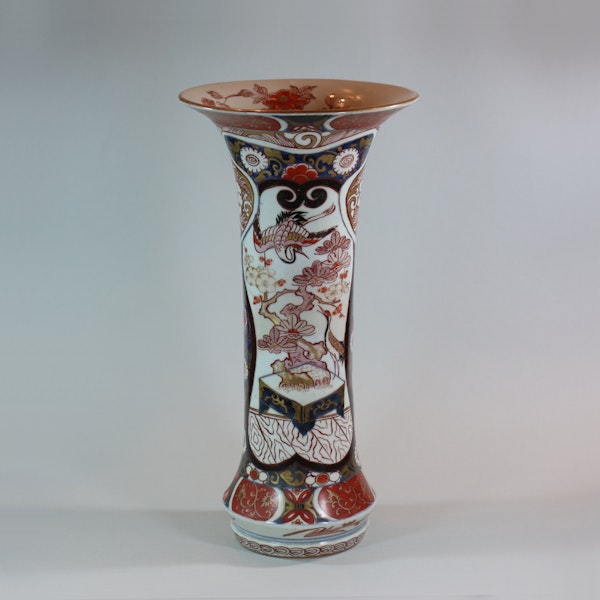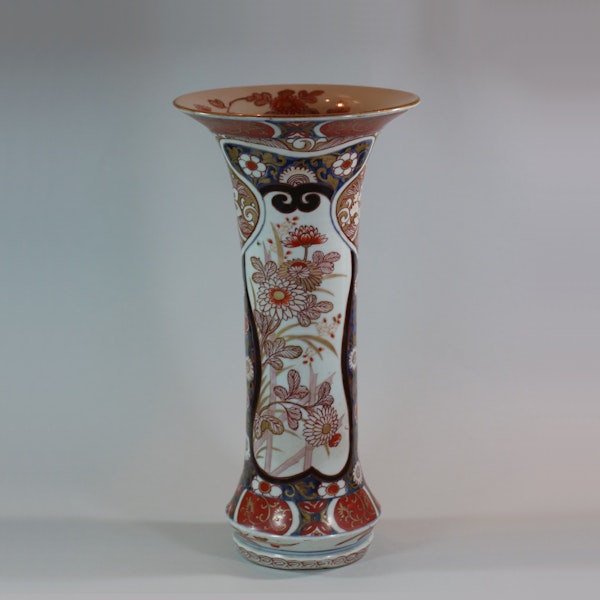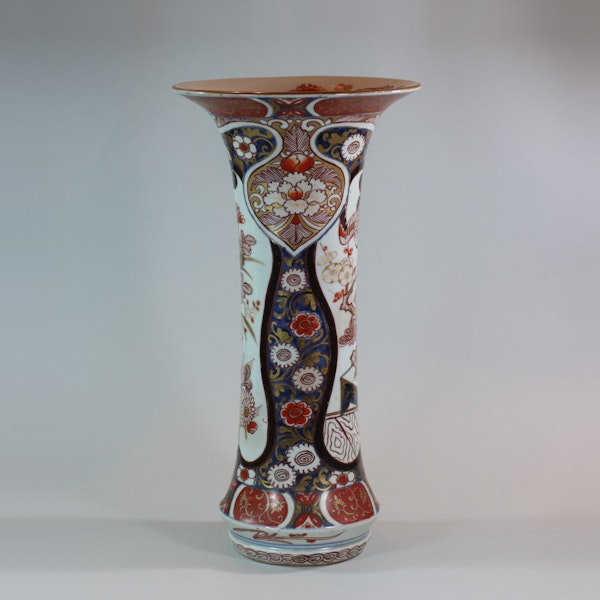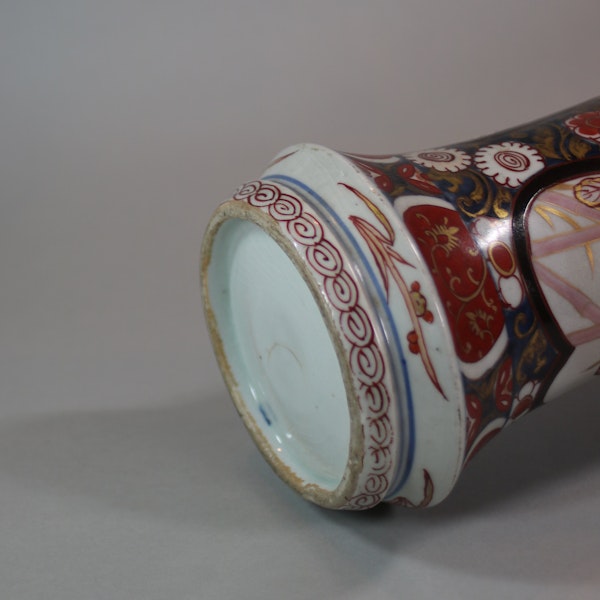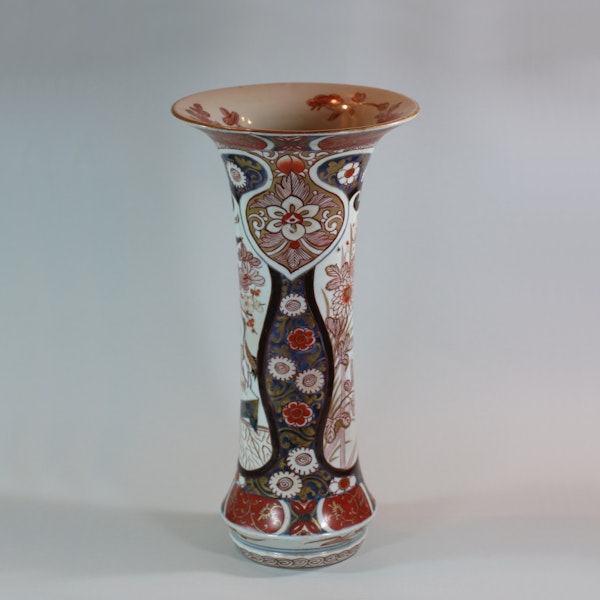Japanese imari trumpet vase, Edo period, 18th century
Japanese imari trumpet vase, Edo period, 18th century
POA
Description
Japanese Imari trumpet vase, 18th century, Edo period, decorated to either side of the body with shaped panels, one enclosing a raised platform with boughs of plum and pine issuing from a rocky base, with a pair of cranes; one standing alongside the arrangement, the other in flight overhead; the other panel with chrysanthemum, lotus and sprouting grasses emerging from a trellis; all against a dark blue ground with gilt foliate scroll and red and white flowerheads between wide bands with red cartouches containing delicate gilt scroll, the foot with sprays of grass and a narrow band of iron-red scrollwork; the shoulders with large gilt pendant cartouches containing a peony head and bud with stylised foliage on one side, a lotus head and bud with stylised foliage on the other, the interior of the flaring rim with sprays of lotus, peony and chrysanthemum.
Condition: Small area of overpainting to rim
Notes: Pine, plum and crane are auspicious symbols respectively, but it is believed that when depicted together the potency of the image is increased. All three motifs represent longevity: pine is an evergreen tree that continues to flourish through the lean winter months, plum is the earliest to blossom, often coinciding with snow and ice and the crane, which can also stand for peace, is a bird associated with Daoist belief, thought to live for thousands of years and act as messenger between the earthly and heavenly realms. The particular combination of plum, pine and crane was popular in traditional Japanese flower arrangement, including 'shimadai' (島台, literally ‘island table’), a special decorative platform which was an important part of ancient betrothal and wedding ceremonies in Japan. Essentially a raised platform with plants and figures, it represents the legendary island of immortals known as ‘hourai’ 蓬莱 (‘penglai’ in Chinese) and so is frequently adorned with symbols of longevity, including crane, pine and plum as well as turtles and bamboo. A shimadai provided an auspicious focal point for ceremonies or banquets, and was intended to celebrate the good fortune of those in attendance, and to ensure a long and happy life together for the couple.
| item details | |
|---|---|
| Material and Technique | Enamelled porcelain |
| Origin | Japanese |
| Period | 18th Century |
| Condition | Other |
| Dimensions | Height: 39.4cm. (15 ½ in.) |
Product REF: W19
